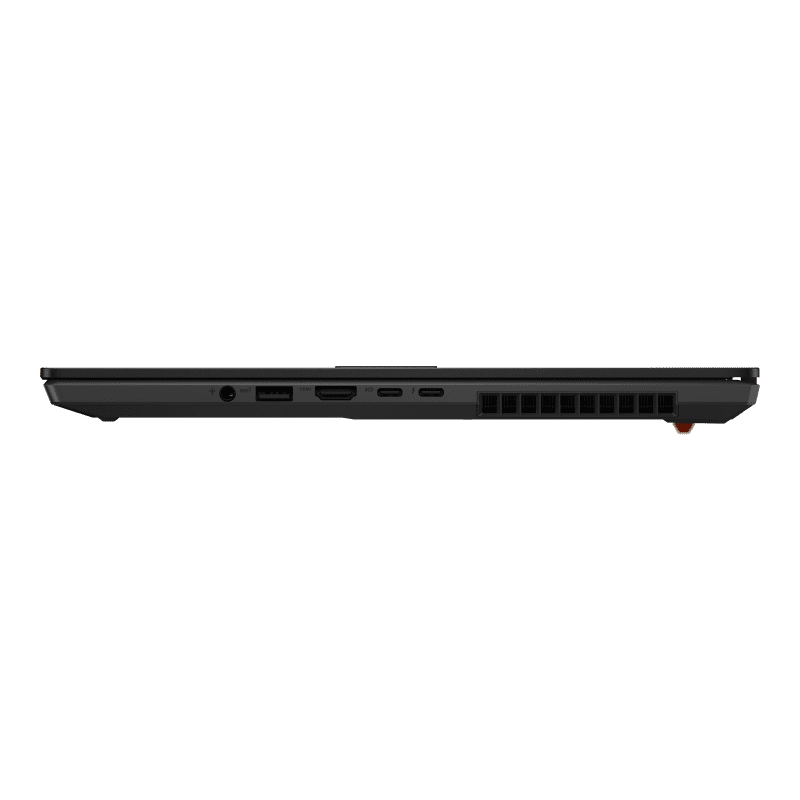Asus is well-known for offering cost-effective laptops with solid performance, and the Asus Vivobook Pro 16X OLED is no exception. Designed for professionals and content creators, this laptop delivers a premium experience with top-of-the-line hardware.



Design
The ASUS Vivobook Pro 16X OLED is an attractive laptop, with its sleek design and contrasting key colours inspired by retro keyboard colorways. The lid retains a sleek design with an Asus badge as its distinguishing flair. However, the only downside of the aesthetic is that it attracts fingerprints easily. If you’re looking for something ultra-sleek and lightweight, the Pro 16X OLED may not be the choice for you as the laptop is on the larger side. It weighs around 2.30kg, which is heavier than ultra-thin-and-light laptops often found in the ASUS Zenbook range. But it manages to balance its weight and premium components to offer a device that isn’t overly hefty.
Display
The Vivobook Pro 16X OLED is, according to ASUS, the world’s first 16-inch 3.2K 120Hz OLED laptop. With a 90% screen-to-body ratio, the display doesn’t only offer smooth visuals, but an immersive experience. The laptop is made with content creators in mind, with its increased contrast thanks to its OLED display technology, while also including 600-nit HDR peak brightness. It’s Vesa Certified and Pantone Validated, while covering 100% of the DCI-P3 colour gamut. The high resolution also means you’ll be able to see your content in great detail, even in bright environments. In your downtime, the OLED display is great for streaming content with enhanced contrast and a smooth framerate.


Performance
The Vivobook Pro 16X OLED is a performance powerhouse, rivalling many other performance-focused laptops. Thanks to its processor and GPU, the laptop handles creative tasks such as photo editing and rendering easily. Put through a PCMark Extended benchmark, the laptop performed better than 69% of all results, with a score of 8052. This places its performance higher than a 2020 gaming laptop, but slightly lower than a 2020 gaming PC. It scored highly for gaming, photos, and rendering, making it perfect for content creators who need to run graphically intensive tasks. Of course, you can also use it for a general workflow as well. The wide keyboard offers a comfortable typing experience that doesn’t feel cramped. This, plus the large display, makes it great for typing up documents and switching between tasks.
The Vivobook also comes with the ASUS DialPad which incorporates a virtual dial into the touchpad making editing and creative workflows that much easier.
Battery
Thanks to its 90Wh battery, the laptop has a respectable battery life for such a high-performance machine. You’ll get a decent amount of work done with the laptop, making it useful for travel or loadshedding. When put through a PCMark 10 video battery life test, with the screen set at 50% brightness, the battery lasted 8 hours and 18 minutes. The exact time you get before the battery drains will depend on what tasks you’re performing, as well as screen brightness and whether you’re using battery-saving mode.
Verdict
Overall, the ASUS Vivobook Pro 16X OLED is an excellent choice for content creators and professionals looking for a high-performance laptop under the R40,000 threshold. At its current price point of R34,998, it delivers impressive performance and respectable battery life. The OLED screen and its high refresh rate offer a premium visual experience, while the laptop’s powerful hardware can handle graphically intensive tasks with ease. While it’s heavier than the ultra-light offerings from ASUS, it packs power into a portable solution that still manages to balance its weight and premium components to offer a device that isn’t overly hefty.


